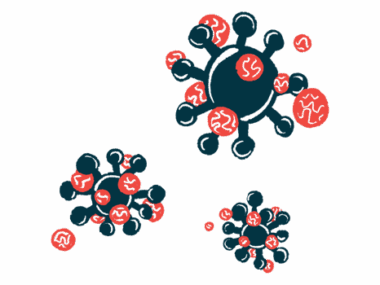New PFIC3-causing mutations identified in 3 children in China
Researchers recommend early genetic testing if disease is suspected
Written by |

A study of three children with progressive familial intrahepatic cholestasis type 3 (PFIC3) in China revealed that different disease-causing mutations in the ABCB4 gene, including three newly reported, led to varying levels of the MDR3 enzyme.
All three children had severe liver damage that required early liver transplantation.
The results provide “new insights into the relationships between genetic mutations in PFIC3 and clinical features,” the researchers wrote.
The study, “Clinical and molecular genetic characteristics of pediatric PFIC3 patients: three novel variants and prognosis for parental liver transplantation,” was published in the Orphanet Journal of Rare Diseases.
PFIC is a group of rare, genetic diseases that interfere with the transport of the digestion-aiding fluid bile out of the liver, leading to stalled bile flow, or cholestasis. As bile builds up, it can damage the liver and leak into the bloodstream, causing itching, jaundice (yellowing of the skin and white parts of the eyes), and other cholestasis symptoms.
Genetic testing for definitive diagnosis
There are several PFIC types, each caused by mutations in different genes. PFIC3 is caused by mutations in the ABCB4 gene that disrupt the production or function of MDR3, a protein that helps neutralize bile components to prevent damage to bile duct cells.
Doctors diagnose PFIC3 by evaluating symptoms and ordering blood and liver tests. However, a definitive diagnosis requires genetic testing.
A team of researchers in China looked at how mutations in ABCB4 are linked to the symptoms and liver damage observed in PFIC3 patients. The goal was to help doctors recognize PFIC3 more quickly.
“For patients with a family history or suspected PFIC3, genetic testing should be conducted as early as possible for a definitive diagnosis,” the researchers wrote, while “for diagnosed patients, a personalized treatment plan should be developed to enhance treatment outcomes and quality of life.”
The team described the cases of three, unrelated children with PFIC3 who received liver transplants from their parents at times ranging from four months to 22 months (nearly two years) after symptom onset.
All three children had severe jaundice, enlarged livers and spleens, and problems with blood clotting — all signs and symptoms of cholestasis. All also showed high blood levels of cholestasis and liver damage markers, including gamma-glutamyl transferase, bile acids, and bilirubin.
Genetic tests showed a total of five ABCB4 mutations, including three that had not been reported before.
One child, who developed symptoms soon before age 11, carried two previously unreported mutations (c.2493G>C and c.592G>A), which were each found to result in a change in an amino acid (protein’s building blocks) in the MDR3. Software models predicted that the first mutation caused an absence of MDR3’s function and that the second mutation had no major effect.
“Considering the patient’s clinical history, we hypothesize that her protein function might have been partially conserved, yet liver [scarring] and liver function impairment progressively escalated over time, culminating in the manifestation of PFIC3 disease,” the researchers wrote.
Another child, who was about 4 when symptoms began, carried a known nonsense mutation (C.3136C>T) in both ABCB4 gene copies. Nonsense mutations result in the production of a shorter, likely nonworking, protein.
The remaining child, who also developed symptoms at about age 4, carried a previously reported nonsense mutation (C.475C>T) in one gene copy and a new mutation (C.938C>T) in the other. The new mutation, which caused an amino acid change, was predicted to affect MDR3’s function.
The oldest child showed slight improvement with ursodeoxycholic acid (UDCA), a first-line cholestasis treatment marketed as Actigall and Urso in the U.S. and also available in generic form. However, the disease persisted. This child required emergency care and blood transfusions for bleeding in the gastrointestinal tract.
The other two children did not respond significantly to UDCA treatment, and their disease worsened rapidly.
In all three children, liver damage markers normalized about two weeks after liver transplant.
When analyzing liver tissue under a microscope, the researchers found that all three children showed signs of permanent liver scarring, known as cirrhosis.
The older child also produced low levels of MDR3, while in the other two, the protein was completely absent. This explains “the slower clinical disease progression” in the oldest child and the “faster disease progression and earlier onset” in the other two children, the team wrote.
The findings highlight the importance of using genetic testing to better understand PFIC3, the researchers wrote. “Early diagnosis and treatment can provide better therapeutic outcomes for affected children,” they wrote.







